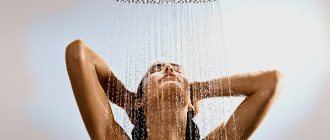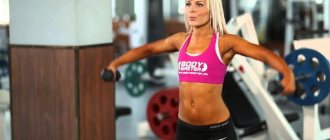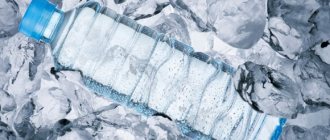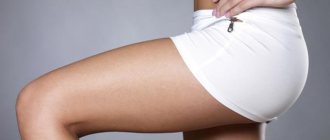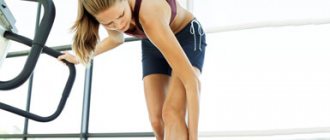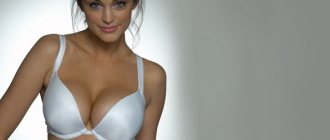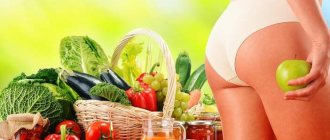Sports massage is a common type of massage designed specifically for athletes. Simple actions by an experienced massage therapist will help a person recover faster after a difficult workout or competition. Regular sessions have a positive effect on the performance of athletes, as well as on the level of their physical capabilities.
Performing massage is an integral part of the training process of every professional athlete. This will make it much easier to achieve optimal fitness or maintain peak fitness. Such a restorative massage will also have a positive effect on amateurs who exercise at home. The risk of injury will be reduced.
The effect of sports massage on the body
A person encounters a huge number of allergens every day. This includes an ecologically flawed environment, water, and food. Medicines, synthetic fabrics, household chemicals. They penetrate everywhere, including sports, which require updating records and constant growth in sporting achievements. How to preserve the natural health of an athlete? It turns out there is such a way! This is a sports massage that shows excellent results.
Important! Sports massage, unlike drug therapy, does not have harmful side effects and is not considered doping by the IOC.
The skin contains a huge number of nerve endings that are closely connected with all the main systems of the body. Therefore, when performing a massage, the work of the nervous, cardiovascular, digestive, urinary, respiratory, endocrine and other systems is balanced. From this point of view, a sports massage performed by an experienced specialist will help quickly solve a number of problems:
- Dead cells of the epidermis (the outermost layer of skin) are removed. This enhances the secretion of sweat and sebum (sebum), which allows for maximum removal of toxins from all layers of the dermis.
- Capillary blood circulation and skin respiration are activated, which fills tissue cells with oxygen, accelerates metabolic processes, and improves cellular nutrition of vital organs.
- Ligaments become elastic, joints gain strength and optimal mobility.
- Muscle spasms are relieved, muscle tone and stress resistance are significantly increased.
- The outflow of lymph is optimized, toxins and “excess” fluid are removed from the tissues, and the overall well-being of the athlete improves.
Historical reference
The ancient Romans and Greeks attached great importance to massage in the system of physical education. However, when their states fell, sports massage was forgotten for many centuries.
During the 1900 Olympic Games, massage was demonstrated as a means of increasing an athlete's endurance and facilitating rapid recovery after competition. This discovery was attributed to American scientists, but there is evidence that their Russian colleagues discovered the positive effects of sports massage 3 years earlier. Proof of this is a note in the 1501st issue of the Russian magazine “Sport”, which was published in 1897. It tells how a completely exhausted cyclist who completed the distance very quickly returned to normal after a massage session.
The first work to substantiate the importance of massage from the point of view of physiology belongs to the Russian scientist Zabludovsky - it was published back in 1906. This and other similar works contributed to the self-education of trainers who were trying to master the technique of sports massage.
Soon the specialty “sports massage therapist” appeared, but, alas, it did not become widespread in pre-revolutionary Russia.
Only after the Great October Revolution did an in-depth study of sports massage begin. In 1924, the compulsory subject “sports massage” was introduced at the Moscow Institute of Physical Culture, and in 1930 the first courses in this specialty were organized.
Today, sports massage is an integral part of physical education organizations. It is used both in the training process and during competitions. Large sports societies have their own massage therapists, and they also accompany sports teams to competitions. In coaching schools, technical schools and physical education institutes, the discipline of sports massage is studied.
Indications
Sports massage is not a medical procedure. It is used before, after and in between training or competition:
- To maintain good physical shape.
- Preventing fatigue.
- Relieving tension.
If an injury occurs or the function of the musculoskeletal system is impaired, the procedure provides athletes with:
- Removal of hematoma.
- Relief of edema.
- Correction of pain syndrome.
Carefully! An ineptly performed sports massage leads to the occurrence of unwanted diseases: myositis, radiculitis, sprains, and shortening of limbs. May cause nerve pinching.
Video
In addition to self-massage, athletes often seek help from professional massage therapists. If you want to know what techniques they use, we suggest you watch a video of a master class on sports massage. Surely the information received will be useful to you.
Dear readers, we hope the above information will be useful to you. Write in the comments if you do sports massage and what effect it has on your body. If you have any additions or notes, please share with us.
Main types
There are several types of fitness massage, each of them pursuing its own goals:
- A training massage is necessary to restore muscle tone, joint mobility, increase vital energy, and correct mood. The duration of the procedure is individual, it is determined by the doctor based on the planned result and the general condition of the athlete. The schedule of sessions is drawn up a couple of days before the start of the competition. The massage begins 1.5 hours after the workout. It is possible to use specialized massage for joints.
- Preliminary massage – precedes sporting events, carried out for 20-25 minutes before the start. Its goal is to increase the athlete’s endurance and normalize the emotional background. Options for the procedure include a warming massage, designed to prevent muscle hypothermia, and a warm-up massage, which improves the athlete’s reaction and prevents injuries.
- Restorative massage is aimed at regenerating the athlete’s strength after competitions, but can be carried out during inter-training, inter-competition pauses for 5-10 minutes.
- A separate category is massage in case of sports injuries , the purpose of which is the rehabilitation of the athlete in the post-traumatic period, with the activation of all regenerative processes of the body. The time is determined by the doctor.
Important! There is an approximate schedule for sports massage, which involves changing various types and techniques: odd days - 1, 3, 5, 7 - local muscle group; even days - 2, 4, 6 - general massage.
How often should the procedure be performed?
Is it possible to get a post-workout massage on a regular basis after every trip to the gym? Yes, but only if we are talking about self-massage. The frequency of sessions with a specialist is 2-3 times a week. If it is not possible to follow a schedule, carry out the procedures at least once a week - after performing particularly difficult exercises.
The main thing in massage is not to overdo it. Minor pain is not only acceptable, but almost inevitable after physical activity. But severe pain is a clear sign that something has gone wrong. In this case, immediately reduce the speed. By performing the massage correctly, the specialist will help the athlete feel all the delights of physiotherapeutic procedures - the athlete will feel better, and training will become more effective.
Rate the material
Share:
Execution method
The main difference between sports massage and classical massage is the concentration on a specific muscle group. At the same time, they are deeply studied with a gradual increase in pressure. In order to better warm up the muscles, ligaments and joints, special ointments and creams are used.
Rules
The sequence of massaged areas, exposure time, type of movements and results make up the rules of sports massage, the essence of which is as follows:
- Massage begins with large muscle groups: back, neck (to the sides of the spinal column), arms (from the elbow to the armpit), lower limbs (from the sole of the feet to the knee).
- The specialist’s movements are necessarily carried out in the direction of the lymph nodes, which serve as a guide, but do not themselves take part in the procedure, in order to avoid the spread of possible infection or toxins that initially accumulate in the lymph node and do not manifest themselves in any way.
- Mechanical impact must be painless, with the exception of a hard massage after an unusually stressful workout. The body independently signals the discomfort that has arisen. You need to listen to him.
- The massage position is chosen so that maximum relaxation of all muscles is achieved, especially those overloaded during training or competition.
Attention! Sports massage is aimed at key muscle groups that are overstressed. In each sport it is specific and requires emphasis in time. (For example, for cyclists, the calf muscles are a priority, while the chest muscles need minimal temporary tactile load.)
Techniques
The massage begins in the “lying on your back” position, ascending: from the calf muscles, interdigital cavities, knee joint of one and then the other side. In this case, stroking, rubbing, kneading, squeezing, and blows are used.
- Stroking ensures that the surface of the skin is freed from dead scales. This stimulates the skin glands, normalizes the function of the cardiovascular and nervous systems. Technically, the technique is performed with light, slow movements of the flat palm to achieve a relaxing effect and quickly alternating, jerky movements for a tonic result.
- A squeeze is the application of force to a local muscle group. The result depends on the depth of contact with the receptors of the skin, muscles, tendons, and blood vessels. The essence is multi-level irritation of nerve endings in order to achieve an optimal balance of metabolic processes, warming the muscles, and activating the nervous system. Both hands are involved in the massage, pressure is applied by their base.
- Rubbing is a threefold increased pressure (compared to squeezing) on the massaged muscle area in order to eliminate abnormal (most often stagnant) manifestations.
- Kneading is reminiscent of the movements when kneading dough, and is most often used as a stimulating technique. In this way, activation of muscle tone and blood circulation is achieved, blood supply to tissues and elasticity of ligaments is improved. A special case of this technique is shaking and felting.
- Tapping, patting, chopping, vibration are percussive techniques performed with free and clenched palms, which in a certain rhythm, alternating each other, quickly and effectively relieve muscle tension, while simultaneously massaging the skin, setting the correct vector for the movement of blood, lymph, and interstitial fluid.
Important! The moment at which the sports massage ends is of great importance: it is necessary to wrap the already massaged parts of the body in warm clothes, preferably made from natural materials.
Possible harm - which muscles should not be massaged and why
Since it is undesirable to delay a massage session after training, it is better to refrain from kneading muscles that did not work or worked little in the gym. However, potential harm should rather be considered in the context of other factors. There are no contraindications regarding the effect on individual muscles.
You should not perform the following procedures:
- if there are bruises, abrasions, open cuts;
- in the presence of fungal and viral infections (fanatical athletes may well exercise even if they are not feeling well, but there is no need to aggravate the situation with a massage);
- for bursitis, gout, rheumatoid arthritis.
If there are even slight doubts about the advisability of massage procedures, it is better to refrain from performing them.
It is extremely important to do the massage correctly. The specialist will do without consulting the athlete, but if the athlete is being massaged by a friend who is only familiar with the basics of the technique, he needs to be supervised. The table will tell you in which directions the movements are performed, “processing” certain zones.
| Zone | Direction |
| Back | From the waist to the neck |
| Legs | From feet to groin area |
| Hands | From hands to armpits |
| Neck | From head to shoulders and back (in the opposite direction) |
Contraindications
Sports massage has a number of important contraindications:
- When the temperature rises;
- Presence of bleeding or blood diseases;
- In case of inflammation of the veins and arteries (due to the possibility of injury to the affected vessels and aggravation of the symptoms of the disease);
- If an acute inflammatory or infectious process occurs in the body;
- In case of exacerbation of a chronic disease (especially with stones in the kidneys, liver), in order to avoid the spread of pathogenic origin through the bloodstream, the development of a painful attack (colic).
- For skin pathology, especially of a pustular nature, which can spread throughout the entire skin during massaging.
- For psycho-emotional disorders;
- During menstruation in women (due to a possible inadequate reaction of the massaged substance, as well as to avoid increased bleeding);
- In case of excessive fatigue after training or competition (due to the general well-being of the athlete);
- During pregnancy of any trimester, taking into account the need to observe a protective regime for the mother and the unborn child.
Peculiarity! Sports massage is successfully used to develop mobility of articular surfaces after endoprosthetics (joint replacement), complex fractures and contractures.


